
Find Help
More Items From Ergsy search
-
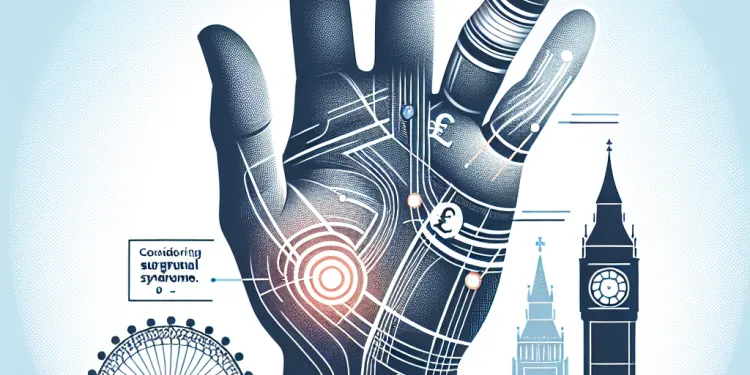
When should I consider surgery for Carpal Tunnel Syndrome?
Relevance: 100%
-

What does Carpal Tunnel Syndrome surgery involve?
Relevance: 99%
-

Carpal Tunnel Syndrome
Relevance: 98%
-

Is Carpal Tunnel Syndrome covered by the NHS?
Relevance: 96%
-

What is Carpal Tunnel Syndrome (CTS)?
Relevance: 92%
-

What causes Carpal Tunnel Syndrome?
Relevance: 89%
-

Can Carpal Tunnel Syndrome recur after treatment?
Relevance: 87%
-

How is Carpal Tunnel Syndrome diagnosed?
Relevance: 87%
-

Are there any alternative treatments for Carpal Tunnel Syndrome?
Relevance: 85%
-

How can I prevent Carpal Tunnel Syndrome?
Relevance: 84%
-

Are there specific exercises that can help with Carpal Tunnel Syndrome?
Relevance: 83%
-

What non-surgical treatments are available for Carpal Tunnel Syndrome?
Relevance: 80%
-

What is the recovery time after Carpal Tunnel Surgery?
Relevance: 79%
-

What are the common symptoms of Carpal Tunnel Syndrome?
Relevance: 76%
-

Can lifestyle changes help manage Carpal Tunnel Syndrome?
Relevance: 74%
-

Can I work or continue sports activities if I have Carpal Tunnel Syndrome?
Relevance: 74%
-

What is Cushing's syndrome?
Relevance: 27%
-
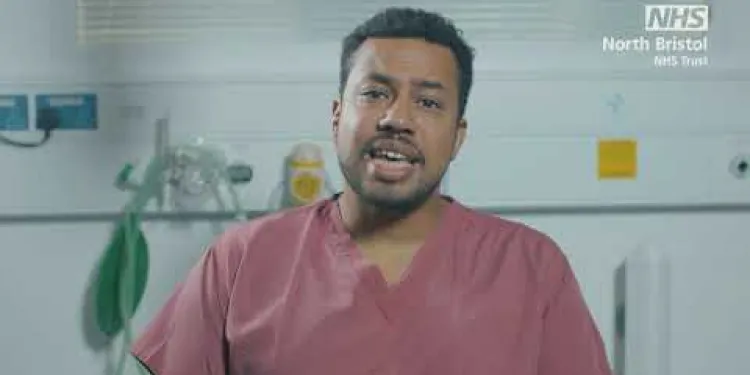
Surgery under local anaesthetic in the Minor Ops Unit at North Bristol NHS Trust
Relevance: 27%
-
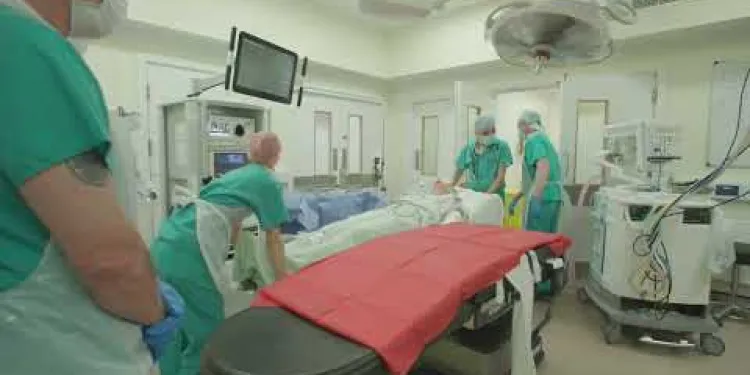
Prostate Surgery
Relevance: 25%
-

Munchausen's syndrome | NHS
Relevance: 25%
-

Greater trochanteric pain syndrome
Relevance: 24%
-
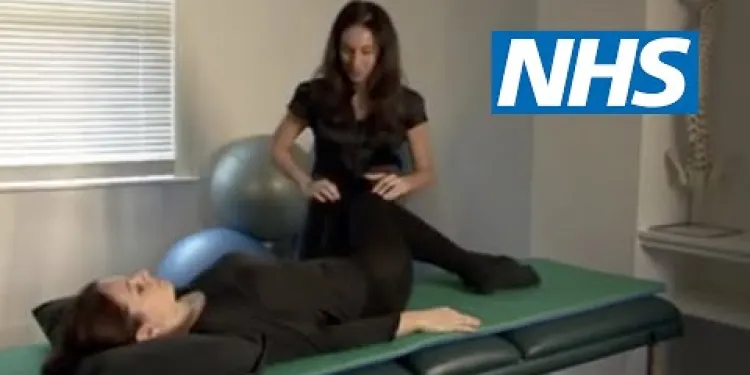
Exercises for sciatica: piriformis syndrome | NHS
Relevance: 24%
-

What is complex sleep apnea syndrome?
Relevance: 24%
-

Prader-Willi Syndrome | NHS
Relevance: 24%
-
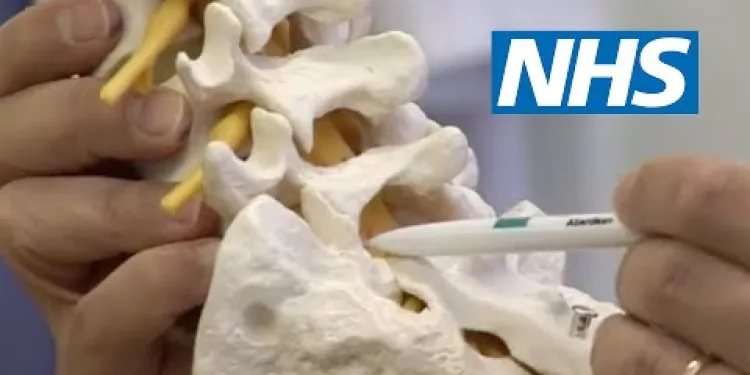
Lumbar surgery | NHS
Relevance: 23%
-

Is surgery necessary for Crohn's disease?
Relevance: 23%
-

What is complex sleep apnea syndrome?
Relevance: 23%
-

Weight Loss Surgery
Relevance: 23%
-
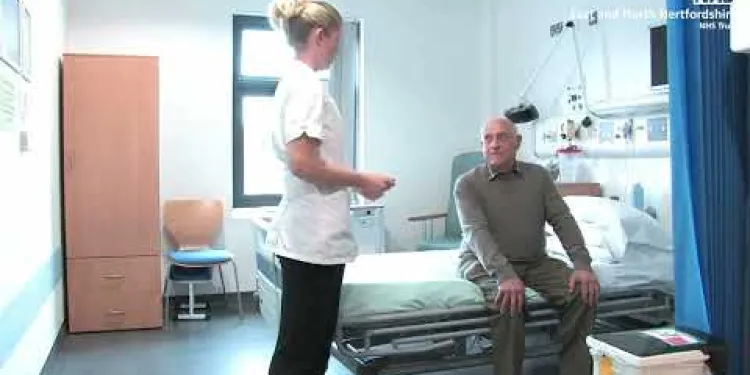
A journey to hip surgery
Relevance: 23%
-

Is chronic fatigue syndrome contagious?
Relevance: 22%
-

Turner syndrome: Beyond the classic XO phenotype
Relevance: 22%
-

Having a child with Down's syndrome | NHS
Relevance: 22%
-

Down's syndrome: Emily's story | NHS
Relevance: 22%
-
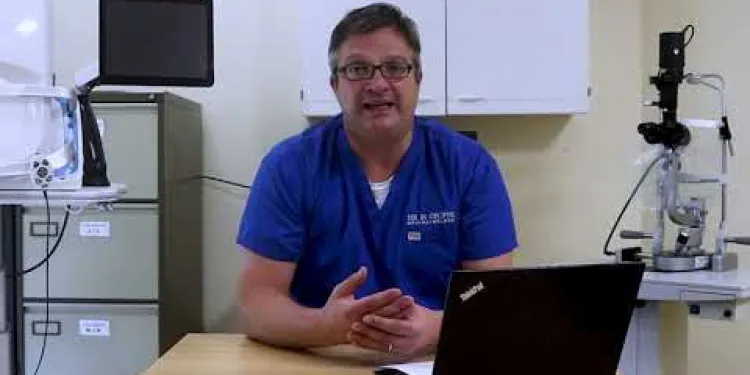
Charles Bonnet Syndrome
Relevance: 22%
-

On the day of your cataract surgery
Relevance: 22%
-

Evidence-Based Interventions: haemorrhoid surgery
Relevance: 22%
-

What causes chronic fatigue syndrome?
Relevance: 22%
-
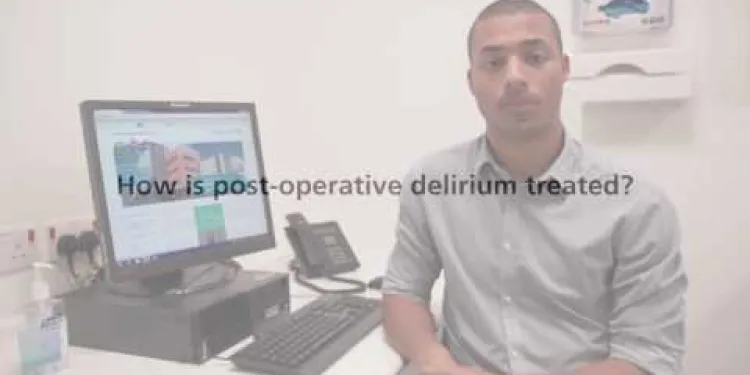
Experiencing delirium after surgery
Relevance: 21%
-

What is chronic fatigue syndrome?
Relevance: 21%
-

What is congenital rubella syndrome?
Relevance: 21%
Understanding Carpal Tunnel Syndrome Surgery
Carpal Tunnel Syndrome (CTS) is a common condition that affects the hands and wrists, causing pain, numbness, and tingling. It occurs when the median nerve is compressed as it travels through the carpal tunnel in the wrist. For those suffering from severe symptoms that do not respond well to conservative treatments, surgical intervention may be necessary. Understanding what carpal tunnel syndrome surgery entails can help patients make informed decisions about their healthcare.
The Purpose of Carpal Tunnel Surgery
The primary purpose of carpal tunnel surgery is to relieve pressure on the median nerve by cutting the ligament that forms the roof of the carpal tunnel. This procedure aims to alleviate the symptoms associated with CTS and improve hand function. There are two main types of surgical procedures used: open carpal tunnel release and endoscopic carpal tunnel release.
Open Carpal Tunnel Release
The open carpal tunnel release is the traditional surgical method for treating CTS. During this procedure, the surgeon makes an incision in the palm of the hand to access the carpal tunnel. The transverse carpal ligament is then cut to relieve pressure on the median nerve. This approach allows the surgeon to have a direct view and access to the ligament, making it a reliable option for many patients.
Endoscopic Carpal Tunnel Release
The endoscopic carpal tunnel release is a minimally invasive technique that involves smaller incisions. In this procedure, a small camera, or endoscope, is inserted into one or two small incisions in the wrist and palm. The surgeon uses this camera to guide the cutting of the transverse carpal ligament. This method generally allows for quicker recovery times and less postoperative pain compared to the open release.
Post-Surgery Recovery
Recovery from carpal tunnel surgery can vary depending on the individual and the type of procedure performed. Most patients can expect some improvement in symptoms shortly after the surgery, but full recovery may take several weeks to a few months. It's important for patients to follow their surgeon's postoperative care instructions, which may include physical therapy exercises to restore strength and flexibility to the hand and wrist.
Potential Risks and Complications
As with any surgical procedure, carpal tunnel surgery carries some risks. These can include infection, bleeding, nerve or blood vessel damage, and a potential for incomplete symptom relief. However, serious complications are rare, and the procedure is generally safe and effective for relieving CTS symptoms. Patients should discuss the risks and benefits with their healthcare provider to make an informed choice.
Understanding Carpal Tunnel Syndrome Surgery
Carpal Tunnel Syndrome, or CTS, is a problem with your hands and wrists. It makes them hurt, feel numb, or tingle. This happens when a nerve in your wrist gets squished. If it hurts a lot and other treatments do not help, surgery might be needed. Knowing about this surgery can help you make smart choices about your health.
Why Do Carpal Tunnel Surgery?
The point of carpal tunnel surgery is to help the nerve in your wrist by cutting a ligament. This surgery makes the pain and tingling better and helps your hand work well. There are two main surgeries: open carpal tunnel release and endoscopic carpal tunnel release.
Open Carpal Tunnel Release
The open carpal tunnel release is the usual way to fix CTS. The doctor makes a cut in your palm to reach the carpal tunnel. They cut the ligament to help the nerve. This way, the doctor can see the ligament clearly. Many people choose this option.
Endoscopic Carpal Tunnel Release
The endoscopic carpal tunnel release is a newer way to do the surgery. It uses smaller cuts. A small camera, called an endoscope, goes into these cuts in your wrist and palm. The doctor watches the camera to cut the ligament. This way usually means you heal faster and it hurts less afterward.
Getting Better After Surgery
How you heal after carpal tunnel surgery can be different for each person. Most people feel better soon, but it can take weeks or months to be fully better. It is important to do what your doctor says after surgery. This might include exercises to make your hand and wrist strong again.
Possible Problems from Surgery
Like all surgeries, carpal tunnel surgery can have some problems. These include getting an infection, bleeding, or damage to nerves or blood vessels. Sometimes, it might not fix all the symptoms. But these problems are rare, and the surgery usually works well. Talk to your doctor about the good and bad things about the surgery to make a good choice.
Frequently Asked Questions
What is carpal tunnel syndrome surgery?
Carpal tunnel syndrome surgery is a procedure to relieve pressure on the median nerve in the wrist by cutting the ligament causing compression.
When is surgery recommended for carpal tunnel syndrome?
Surgery is recommended if symptoms are severe, persistent, and do not improve with non-surgical treatments such as splinting or steroid injections.
What are the types of carpal tunnel surgery?
The two main types of surgery are open carpal tunnel release and endoscopic carpal tunnel release.
How is open carpal tunnel release surgery performed?
Open surgery involves making an incision in the palm and cutting the carpal ligament to relieve pressure on the median nerve.
How is endoscopic carpal tunnel release surgery performed?
Endoscopic surgery uses a small camera and tools inserted through tiny incisions to cut the ligament with less tissue damage.
How long does carpal tunnel surgery take?
The procedure typically takes about 10 to 20 minutes.
Is carpal tunnel surgery performed under anesthesia?
Yes, the surgery is usually performed under local anesthesia with sedation, but sometimes general anesthesia is used.
What is the recovery time after carpal tunnel surgery?
Initial recovery can take a few weeks, but full recovery may take several months, depending on individual circumstances.
What are the risks of carpal tunnel surgery?
Risks include infection, nerve damage, stiffness, and incomplete symptom relief.
What is the success rate of carpal tunnel surgery?
Carpal tunnel surgery has a high success rate, with most patients experiencing significant symptom relief and improved hand function.
Can symptoms recur after carpal tunnel surgery?
While rare, symptoms can recur if scar tissue forms or if there is incomplete release of the ligament.
How should I prepare for carpal tunnel surgery?
Preparation involves discussing your medical history with your surgeon, stopping certain medications, and arranging for postoperative care.
What postoperative care is needed after carpal tunnel surgery?
Care involves wound management, hand exercises, avoiding heavy lifting, and attending follow-up appointments.
Will I need physical therapy after carpal tunnel surgery?
Physical therapy is often recommended to help restore hand strength and flexibility.
Can I use my hand immediately after carpal tunnel surgery?
You'll need to limit use initially, gradually increasing activity as you heal.
How soon can I return to work after carpal tunnel surgery?
Return to work depends on your job. Light duties may resume in a few weeks, while manual labor may require longer recovery.
Will I have a scar after open carpal tunnel release surgery?
Yes, an open technique leaves a scar on the palm that fades over time.
Is endoscopic carpal tunnel release better than open surgery?
Endoscopic surgery may have a quicker recovery and less scarring, but both methods are effective. Your surgeon will recommend the best option for you.
What should I expect on the day of carpal tunnel surgery?
Expect pre-surgery preparations, the surgery itself, and postoperative recovery monitoring before being discharged.
Can carpal tunnel syndrome be treated without surgery?
Yes, mild cases may be managed with splints, lifestyle changes, and medications, but surgery is often needed for severe cases.
What is carpal tunnel syndrome surgery?
Carpal tunnel syndrome surgery is an operation. It helps your hand and wrist. It stops pain and tingling. This pain or tingling is from carpal tunnel syndrome.
Doctors do the surgery to make more space in your wrist. This helps nerves work better.
If you have carpal tunnel, talk to your doctor. They can say if surgery can help you.
Tools like picture charts or audiobooks can help you understand more.
Carpal tunnel surgery helps to stop pain in your wrist. The doctor does this by cutting a band inside your wrist that is pressing on a nerve.
When Should You Have an Operation for Carpal Tunnel?
The doctor might say you need an operation if your hand really hurts or if other treatments don't help. Surgery can make your hand feel better.
If you're not sure, use pictures or videos that explain it. You can also ask a friend or family member to help you understand.
Doctors say you should have surgery if your pain is very bad, does not go away, and other treatments do not work. Other treatments include using a brace or getting a shot to help the pain.
What kinds of carpal tunnel surgery are there?
Carpal tunnel surgery helps fix hand pain. There are two main types:
- Open Surgery: The doctor makes a big cut on your hand to fix the problem.
- Endoscopic Surgery: The doctor makes a small cut and uses a tiny camera to help fix the problem.
Both surgeries can help with wrist and hand pain.
If you find reading hard, you can ask someone to read to you. Or you can use tools that read text out loud.
There are two main types of surgery to help fix carpal tunnel. They are called open carpal tunnel release and endoscopic carpal tunnel release.
How do doctors do open carpal tunnel release surgery?
Doctors help fix carpal tunnel by doing a surgery. This is called "open carpal tunnel release surgery."
Here is how they do it:
- First, doctors make your hand numb so you won't feel pain.
- Then, they make a small cut in your hand.
- Next, they use special tools to cut a tight band inside your wrist. This band is called the "ligament."
- Cutting the ligament gives more space for the nerves in your wrist.
- Finally, doctors close the cut with stitches, which help it heal.
This surgery helps make the pain and numbness in your hand go away.
If you have a hard time reading, try using tools like audiobooks or speech-to-text. A family member or friend can also help by reading it to you.
Open surgery means the doctor makes a cut in your palm. They cut a band inside your wrist to ease pressure on a nerve called the median nerve.
How do doctors do endoscopic carpal tunnel release surgery?
Doctors use a special tool called an endoscope. It has a tiny camera and a light. This helps the doctor see inside the wrist.
First, the doctor makes a small cut in the wrist or palm.
Then, the endoscope goes through the cut. The camera shows the doctor where to cut the ligament.
The doctor cuts the ligament. This helps to make more room in the wrist.
Making more room helps take away the pain from the carpal tunnel.
After surgery, your wrist may feel sore. Tell someone if you have pain.
If you have a hard time reading, you can:
- Ask someone to read with you.
- Use a reading app or tool to help understand words.
- Take breaks and read a little at a time.
Endoscopic surgery is a way doctors fix things inside the body. They use a tiny camera and special tools. The doctor makes small cuts in the skin to put the camera and tools inside. This helps cut the ligament without hurting too much of the body.
How long is carpal tunnel surgery?
Carpal tunnel surgery is a simple operation. It usually takes about 15 to 30 minutes. This is half an hour or less.
If you want to learn more, you can ask your doctor or nurse. They can explain it to you in an easy way.
The procedure usually takes 10 to 20 minutes.
Do doctors use medicine to make you sleep during carpal tunnel surgery?
Yes, the doctor usually does the surgery with the area numbed so you don't feel pain, and you might feel sleepy. But sometimes, they give you medicine to make you sleep during the whole surgery.
How long does it take to get better after carpal tunnel surgery?
Getting better at first might take a few weeks. But, to feel completely better, it might take a few months. It depends on the person.
What can go wrong after carpal tunnel surgery?
There are some things that could go wrong, like:
- Getting an infection (when germs make you sick).
- Hurting a nerve (nerves help you feel things and move).
- Feeling stiff (when your body feels tight and doesn't move easily).
- Not feeling all better (some problems might not go away).
How often does carpal tunnel surgery work?
Carpal tunnel surgery works well for most people. After the surgery, many people feel much better and can use their hands more easily.
Can symptoms come back after carpal tunnel surgery?
Sometimes, symptoms can come back after surgery. It's important to rest and follow the doctor's advice.
Here are some tips to help:
- Use a stress ball to gently exercise your hand.
- Take breaks if your hand hurts.
- Ask someone to help if you need it.
Sometimes, symptoms can come back. This can happen if scar tissue forms or if the ligament is not fully released.
Getting Ready for Carpal Tunnel Surgery
Here are some simple steps to get ready for your carpal tunnel surgery:
- Talk to Your Doctor: Ask your doctor any questions you have. Make sure you understand what will happen during the surgery.
- Arrange for Help: Ask a friend or family member to help you after the surgery. You might need someone to drive you home and help you for a few days.
- Plan Your Meals: Prepare some easy-to-make meals. This way, you have food ready when you’re recovering.
- Get Comfortable Clothes: Wear loose clothes on the day of surgery. This makes it easier to change and be comfortable.
- Follow Instructions: Listen to what the doctor or nurse tells you to do before the surgery. For example, you might not be able to eat or drink anything for a few hours before.
Tools to help you:
- Write a List: Write down any questions you have for the doctor, so you don’t forget.
- Set Reminders: Use your phone to remind you when to stop eating or drinking before surgery.
Getting ready for your surgery means talking to your doctor about your health, not taking some medicines, and having a plan for help after the surgery.
What care is needed after carpal tunnel surgery?
Here is how to take care of yourself after carpal tunnel surgery:
- Keep your hand raised on a pillow to stop swelling.
- Move your fingers gently to help blood flow.
- Keep your bandage clean and dry.
- Rest your hand and avoid lifting heavy things.
- Follow your doctor's advice and take your medicine.
- Go to follow-up visits with your doctor.
Ask a family member or friend to help you. They can support you with tasks while you heal. It's okay to ask for help if you need it.
Take care of your wound, do hand exercises, don't lift heavy things, and go to your check-up appointments.
Will I need help to get better after my wrist surgery?
Going to a special doctor called a physical therapist can help make your hands strong and flexible again.
Can I use my hand right after carpal tunnel surgery?
After carpal tunnel surgery, your hand needs time to heal. You should not use it right away. It’s important to rest your hand.
Here are some tips to help:
- Ask your doctor when it is safe to use your hand.
- Use a soft grip ball to gently exercise your hand when the doctor says it is okay.
- Keep your hand up, like when you wave, to stop swelling.
At first, do not use it too much. Slowly, do a little more as you start to feel better.
When can I go back to work after carpal tunnel surgery?
Carpal tunnel surgery helps fix pain in your hand and wrist. After the surgery, your hand needs time to heal. But when can you go back to work?
- Rest: Give your hand a rest for a while. This might be a few weeks.
- Work type: If your job uses your hands a lot, like typing or lifting things, you might need more time off. If your job doesn't use your hands much, you might go back sooner.
- Ask your doctor: Always ask your doctor when it is safe to return to work. They know what is best for you.
- Be careful: Even when you go back to work, be gentle with your hand. Don't do things that make it hurt.
Tools like a calendar can help you keep track of healing time. Also, talk to your boss about changes to your work that might help, like using special tools or having more breaks.
When you can go back to work depends on your job. If your job is easy, you might start in a few weeks. If your job is hard, you might need more time to feel better.
Here are some tips to make it easier:
- Ask your doctor when you can work again
- Listen to your body
- If you get tired, take breaks
- Ask for help if you need it
Will I have a scar after open carpal tunnel release surgery?
After this surgery on your wrist, you might have a scar. A scar is a line on your skin where the cut was made.
To help with your scar, you can:
- Use special creams to make the scar softer.
- Talk to your doctor about using bandages or tape on the scar.
If you have questions, ask your doctor or nurse. They can help you understand more.
Yes, when doctors do the open technique, it leaves a mark on your hand. But don't worry, the mark will get lighter after some time.
Which is better: endoscopic carpal tunnel release or open surgery?
You might want to know which surgery is better for carpal tunnel. Carpal tunnel is when your hand hurts or feels numb.
There are two types of surgery:
- Endoscopic Surgery: The doctor makes a small cut on your wrist and uses a tiny camera to help fix the problem.
- Open Surgery: The doctor makes a bigger cut to see and fix the problem.
Here are some things to think about:
- With endoscopic surgery, you heal faster and the scar is smaller.
- With open surgery, the doctor can see more of your hand.
Talk to your doctor about which surgery is better for you. You can also use picture charts or ask someone to explain the words to help you understand.
Doctors can use a special tool to do surgery. This might help you get better faster and leave smaller scars. But both ways work well. Your doctor will tell you which is best for you.
What will happen on the day of my carpal tunnel surgery?
Here is what you can expect:
- You will go to the hospital or clinic.
- Doctors and nurses will help you feel safe and comfortable.
- You might wear a special gown and lie down on a bed.
- A doctor will give you medicine so you don't feel pain. You might feel sleepy.
- The doctor will do the surgery to help your hand feel better.
- After the surgery, you will rest and wake up slowly.
- Nurses will check on you to make sure you are okay.
- When you feel ready, you can go home with someone who can help you.
Here are some tips:
- Ask questions if you are unsure about anything.
- Take deep breaths to help you relax.
- Use pictures or flashcards to understand better.
Before the surgery, you will get ready. Then, you will have the surgery. After the surgery, doctors and nurses will look after you. Once you feel better, you can go home.
Can we treat carpal tunnel syndrome without surgery?
Yes, if it's not too serious, you can use splints, change how you do things, and take medicine. But if it's really bad, you might need an operation.
Useful Links
- Ergsy carfully checks the information in the videos we provide here.
- Videos shown by Youtube after a video has completed, have NOT been reviewed by ERGSY.
- To view, click the arrow in centre of video.
- Most of the videos you find here will have subtitles and/or closed captions available.
- You may need to turn these on, and choose your preferred language.
- Go to the video you'd like to watch.
- If closed captions (CC) are available, settings will be visible on the bottom right of the video player.
- To turn on Captions, click settings .
- To turn off Captions, click settings again.
More Items From Ergsy search
-

When should I consider surgery for Carpal Tunnel Syndrome?
Relevance: 100%
-

What does Carpal Tunnel Syndrome surgery involve?
Relevance: 99%
-

Carpal Tunnel Syndrome
Relevance: 98%
-

Is Carpal Tunnel Syndrome covered by the NHS?
Relevance: 96%
-

What is Carpal Tunnel Syndrome (CTS)?
Relevance: 92%
-

What causes Carpal Tunnel Syndrome?
Relevance: 89%
-

Can Carpal Tunnel Syndrome recur after treatment?
Relevance: 87%
-

How is Carpal Tunnel Syndrome diagnosed?
Relevance: 87%
-

Are there any alternative treatments for Carpal Tunnel Syndrome?
Relevance: 85%
-

How can I prevent Carpal Tunnel Syndrome?
Relevance: 84%
-

Are there specific exercises that can help with Carpal Tunnel Syndrome?
Relevance: 83%
-

What non-surgical treatments are available for Carpal Tunnel Syndrome?
Relevance: 80%
-

What is the recovery time after Carpal Tunnel Surgery?
Relevance: 79%
-

What are the common symptoms of Carpal Tunnel Syndrome?
Relevance: 76%
-

Can lifestyle changes help manage Carpal Tunnel Syndrome?
Relevance: 74%
-

Can I work or continue sports activities if I have Carpal Tunnel Syndrome?
Relevance: 74%
-

What is Cushing's syndrome?
Relevance: 27%
-

Surgery under local anaesthetic in the Minor Ops Unit at North Bristol NHS Trust
Relevance: 27%
-

Prostate Surgery
Relevance: 25%
-

Munchausen's syndrome | NHS
Relevance: 25%
-

Greater trochanteric pain syndrome
Relevance: 24%
-

Exercises for sciatica: piriformis syndrome | NHS
Relevance: 24%
-

What is complex sleep apnea syndrome?
Relevance: 24%
-

Prader-Willi Syndrome | NHS
Relevance: 24%
-

Lumbar surgery | NHS
Relevance: 23%
-

Is surgery necessary for Crohn's disease?
Relevance: 23%
-

What is complex sleep apnea syndrome?
Relevance: 23%
-

Weight Loss Surgery
Relevance: 23%
-

A journey to hip surgery
Relevance: 23%
-

Is chronic fatigue syndrome contagious?
Relevance: 22%
-

Turner syndrome: Beyond the classic XO phenotype
Relevance: 22%
-

Having a child with Down's syndrome | NHS
Relevance: 22%
-

Down's syndrome: Emily's story | NHS
Relevance: 22%
-

Charles Bonnet Syndrome
Relevance: 22%
-

On the day of your cataract surgery
Relevance: 22%
-

Evidence-Based Interventions: haemorrhoid surgery
Relevance: 22%
-

What causes chronic fatigue syndrome?
Relevance: 22%
-

Experiencing delirium after surgery
Relevance: 21%
-

What is chronic fatigue syndrome?
Relevance: 21%
-

What is congenital rubella syndrome?
Relevance: 21%


